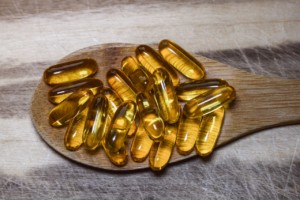 Breaking news.
Breaking news.
To address this, two studies using the same methodology—i.e., comparing the risk for developing a disease over time as a function of blood LA levels—looked specifically at cardiovascular disease (CVD) as well as diabetes.
The latest study, published in Circulation, pooled data from 30 prospective observational studies from 13 countries involving about 69,000 people. The data included both baseline blood LA levels and subsequent risk for developing and/or dying from CVD.
People in the top 10% of LA levels were 7% less likely to develop any CVD and 22% less likely to die of CVD. They were also 12% less likely to have an ischemic stroke (i.e., blocked brain artery) compared with those in the bottom 10% of LA levels.
A similarly conducted study, published in 2017 in The Lancet, analyzed data from 20 studies involving almost 40,000 people from 10 countries, in whom 4,347 new cases of diabetes occurred over time. These studies included adults with a wide range of ages and without any diagnosis of type 2 diabetes at the onset of the studies, when they were laboratory tested for levels of two key omega-6 markers—LA and arachidonic acid (AA). In this study, people with the highest LA levels were 35% less likely to develop diabetes than those in the lowest 10% of LA levels.
“The health benefits or harms that may come from the consumption of omega-6 fatty acids [especially LA, which constitutes 99% of the omega-6 fatty acids in the diet] are controversial,” said OmegaQuant’s Bill Harris, PhD, FAHA, one of the authors on the latest Circulation paper. “These two studies indicate that consuming more LA will likely lower risk for diabetes and CVD. This means that LA is good for us, not bad.”
According to Harris, because LA can be converted into AA, which is the precursor to many pro-inflammatory molecules, some researchers believe LA should be considered pro-inflammatory itself.
But Harris and other experts believe this view is too simplistic because 1) extremely little LA is converted to AA, 2) AA also makes anti-inflammatory molecules, and 3) LA itself can be converted to anti-inflammatory molecules.
“Regardless of the biochemistry (what molecules LA gets turned into and what they may do in the body), the larger question of ‘Do people who eat more LA (or better yet, have higher blood levels of LA) get sicker than people who have lower levels?’ is just now beginning to get answered,” Harris said.
These findings confirm the prediction made 10 years ago in an AHA Scientific Advisory on Omega-6 Fatty Acids and Cardiovascular Disease, the lead author of which was Harris: “To reduce omega-6 PUFA intakes from their current levels would be more likely to increase than to decrease risk.”
